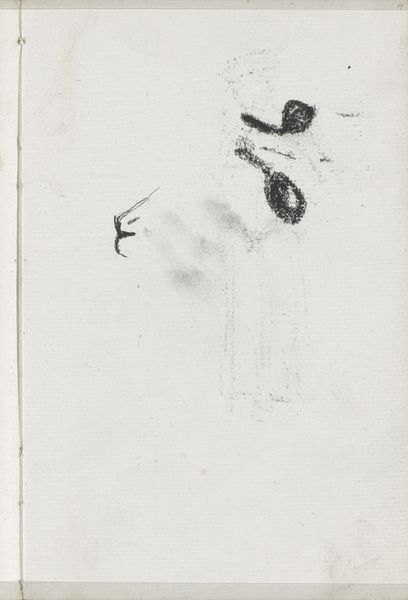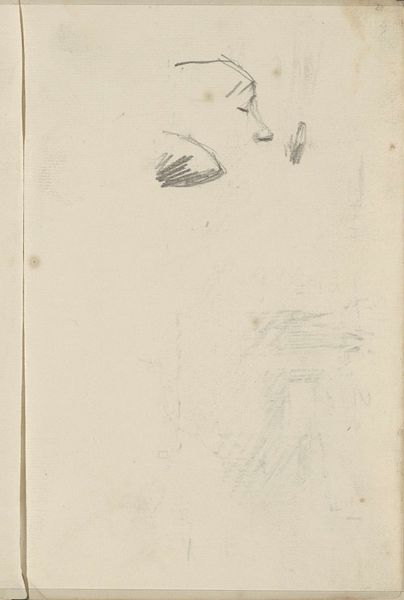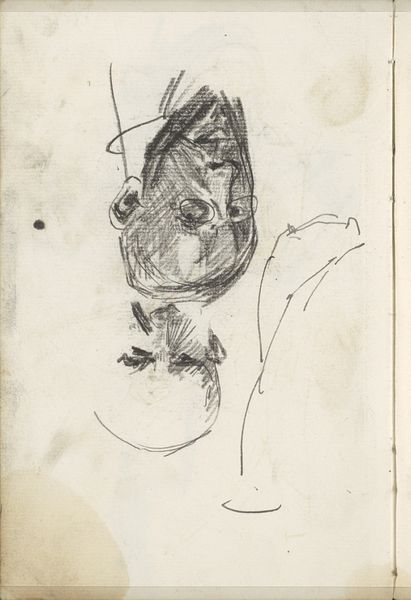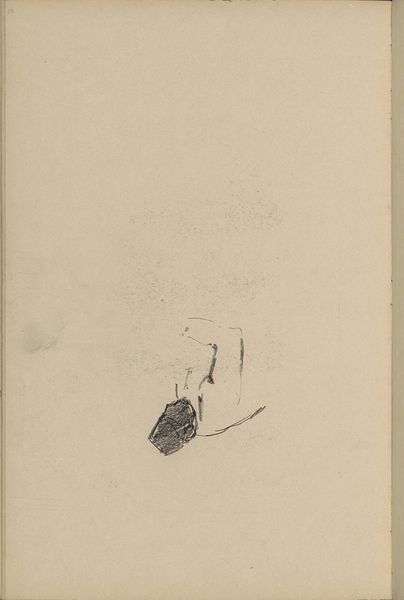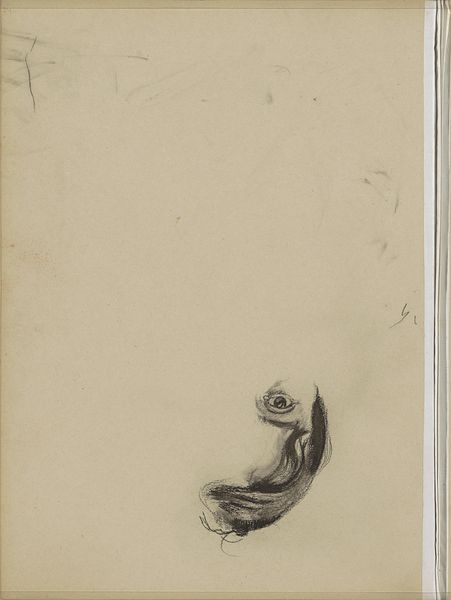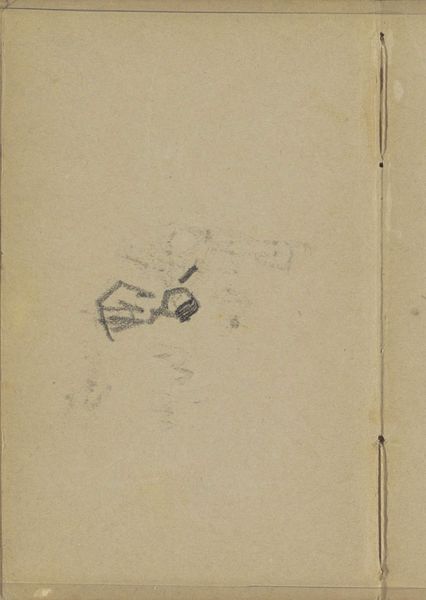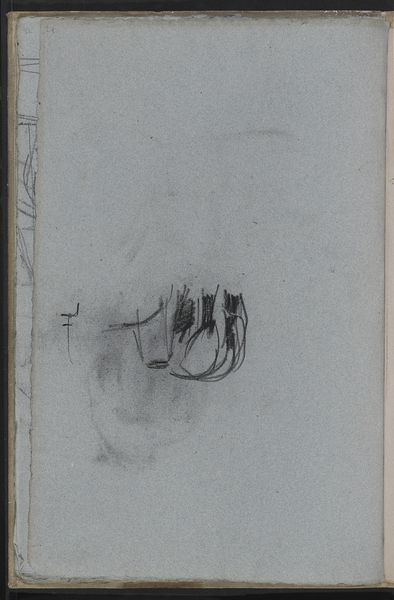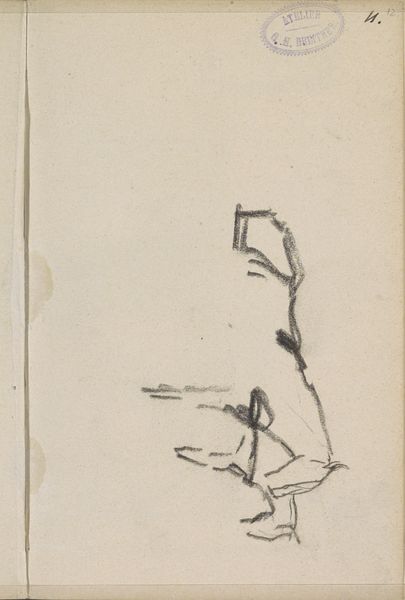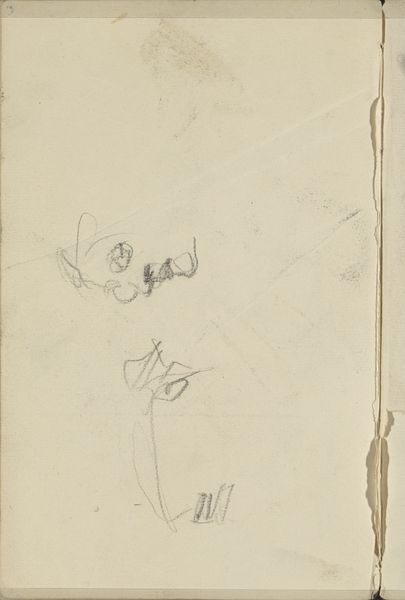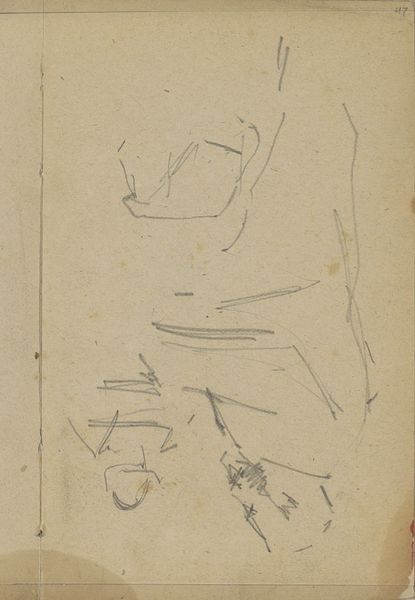
drawing, pencil
#
portrait
#
drawing
#
impressionism
#
pencil sketch
#
pencil
#
realism
Copyright: Rijks Museum: Open Domain
Curator: Here we have George Hendrik Breitner’s “Two Cats,” a pencil sketch from around 1884-1886. It’s currently held at the Rijksmuseum. Editor: Immediately, I'm struck by its incompleteness. It's just suggestive, a few fleeting strokes capturing the essence of the cats’ form. Curator: Exactly! Breitner, embedded in the realism and impressionism of the era, often sketched ordinary urban scenes, moving away from formal academic tradition. This fits into a broader conversation about domesticity and the representation of animals as part of modern urban life. These aren't idealized animals, they're...cats. Editor: You're right. Looking closely, the varied pressure of the pencil work is quite compelling, moving from these barely-there wisps to some intensely dark shadows defining the cats' features. What pencil do you imagine him using for this study? Was it locally sourced, from what materials? The means of production certainly informed the final effect. Curator: Fascinating. Considering the historical context, one might ask about the gendered nature of the domestic sphere, particularly concerning the cat as a figure often associated with femininity and independence, particularly at a time when the first wave of feminism was nascent in Europe. Editor: And also what this implies about artistic labor? Breitner used inexpensive, readily available materials, transforming what may have begun as a casual doodle into a valuable cultural artifact. What other work might have been done at this same table, upon the same sheets of paper? Curator: We are seeing something usually private; these pencil strokes can be seen as a move to depict working-class and marginalized figures in all their quotidian complexities, Breitner's choices were inherently political, seeking to disrupt traditional class boundaries. Editor: That brings up a great point; those seemingly hurried pencil strokes do suggest a sense of immediacy. Perhaps he wasn’t aiming for an artistic representation at all—just practicing his craft or idling. Perhaps his patron asked for "something for the kids?" In that sense, Breitner democratized his methods to a great extent by the limitations of his tools. Curator: This work invites viewers to contemplate how society represents figures that have a lack of political clout and/or authority. Ultimately, by capturing the essence of these animals with such honesty and nuance, it demands space to re-evaluate our own biases. Editor: Indeed, a powerful lesson in how something so elemental could ignite an examination of both the world we inherit and the labor necessary to construct a new, hopefully better, one.
Comments
No comments
Be the first to comment and join the conversation on the ultimate creative platform.
